The location chosen for the project There Is No Place Like Home is a construction site in a remote part of Rome. All the possible references to the idea of ‘home’ are emphasized by Judy Garland in a state of trance repeating as an automaton the sentence “There is no place like home” in English and Spanish, thus leaving a few doubts on the message of the exhibition:
The house is a metaphor for art in general, not just for the art system. And who should inhabit this House of Art if not the artists themselves?
The exhibition project is an experiment conducted by a group of Roman and Rome-based artists attempting to find a place, which is the place of art and artists, by using the metaphor of the ‘building’ to fully reflect the spirit of sharing of the project.
Looking forward to the publication of the catalog edited by NERO, Where’s Art further discusses with organizer artists on the new exhibition format.
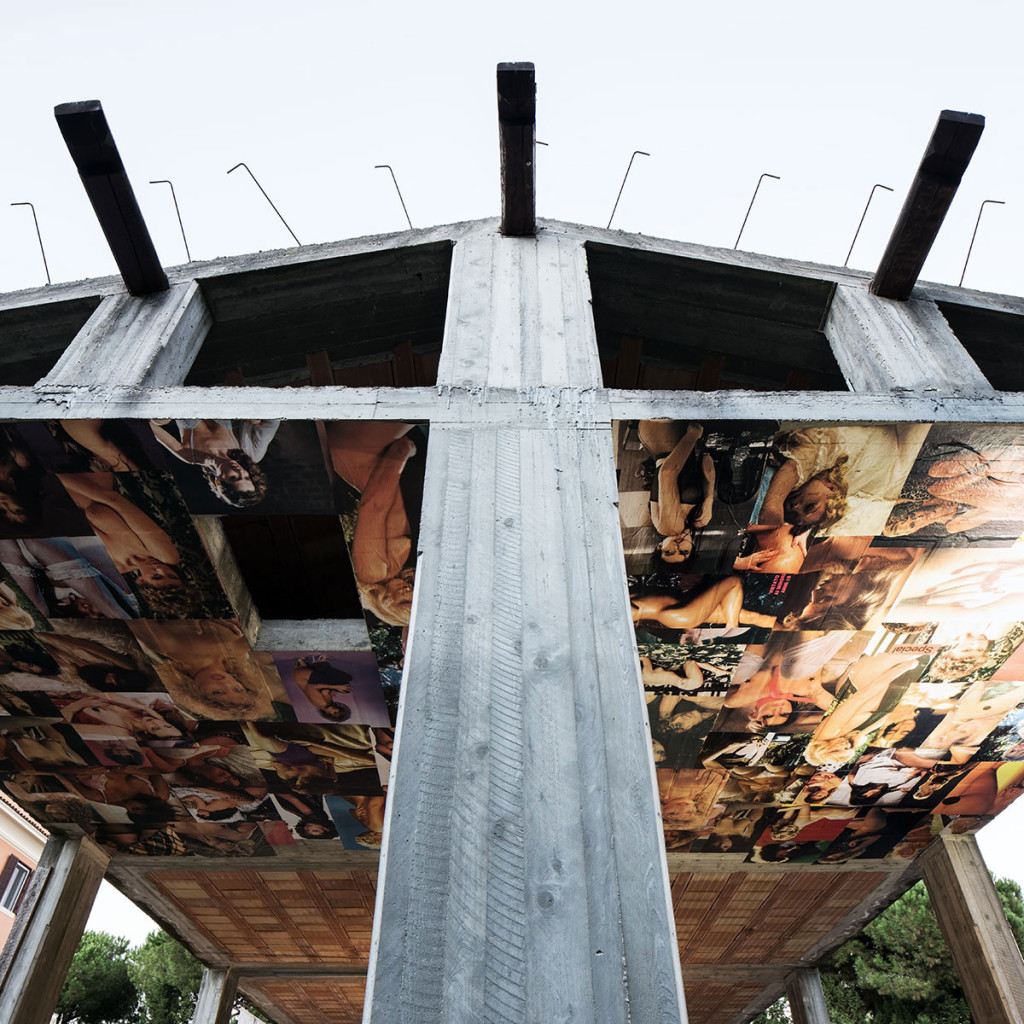
Flavio Favelli, ‘Come Into My Life’, 2014, collage, movie posters, 800 x 800 cm. Photo: altrospazio. Image courtesy the artist.
The title of the project There Is No Place Like Home as well as the press image evoke an almost nostalgic sense of belonging to a family or a system. The work of Eli Cortiñas also seems to address such a feeling. Which home/ system are you referring to? The art world in general, or rather the status of the artist?
The house is a metaphor for art in general, not just for the art system. And who should inhabit this House of Art if not the artists themselves? Eli Cortiñas’ work was undoubtedly a precious suggestion and we felt that the title could also give the name to the project. In addition, the exhibition space is a construction site for dwellings, and the metaphor of “building” fully reflects the spirit of the project.
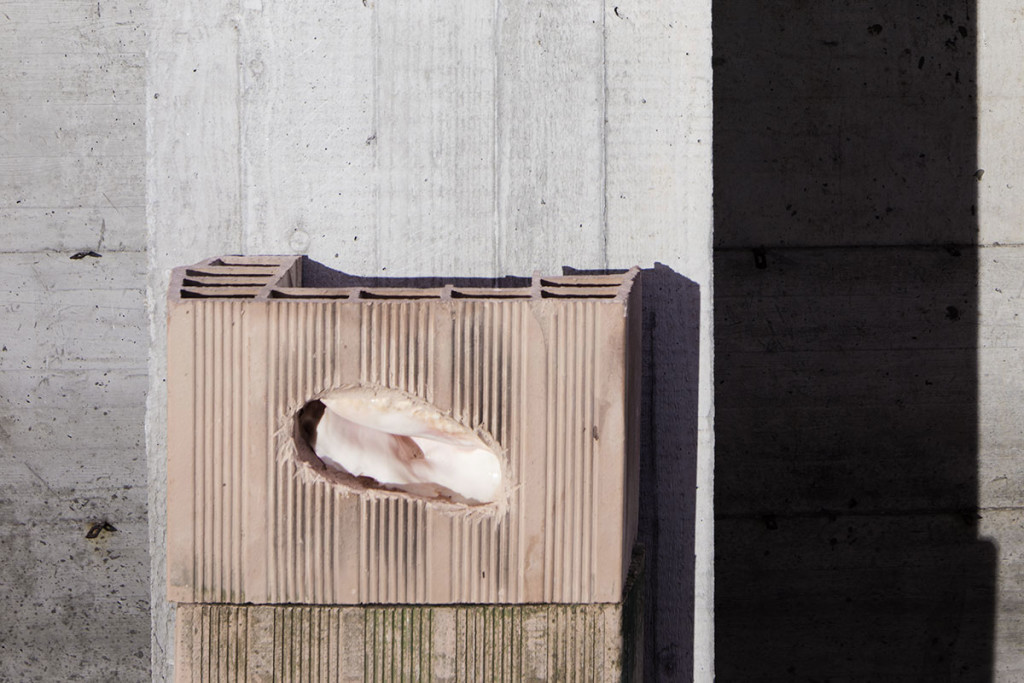
Alessandro Piangiamore, ‘Attorno ad una Conchiglia Vuota’, 2014, mixed media. Photo: altrospazio. Image
courtesy There Is No Place Like Home.
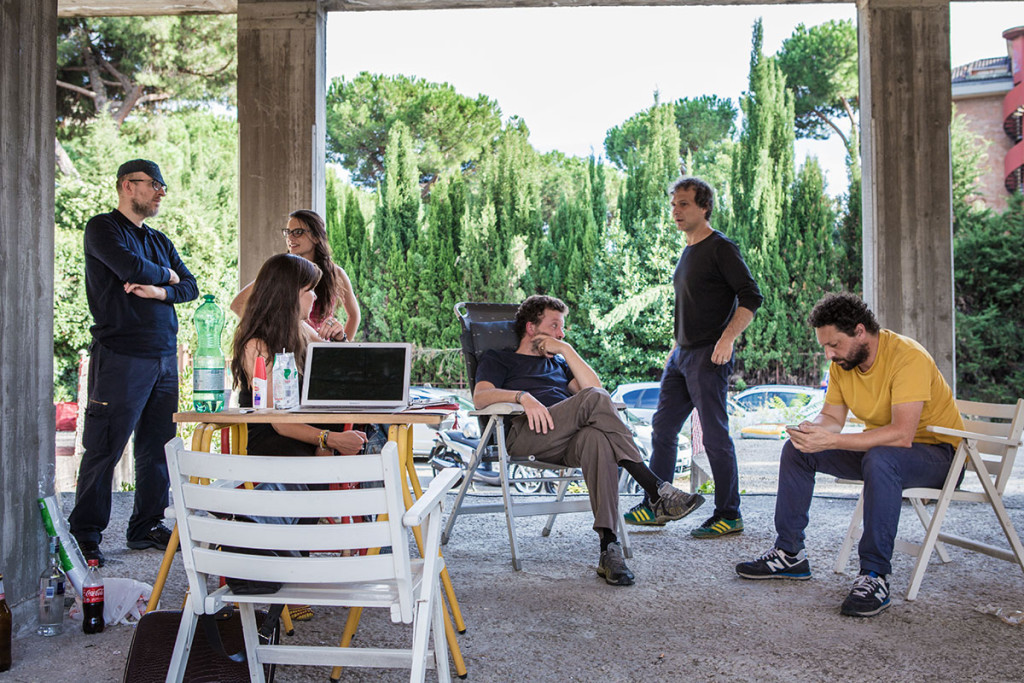
There Is No Place Like Home, work in progress, September 2014- h24, Rome. Photo: altrospazio. Image courtesy There Is No Place Like Home.
This project has been conceived by artists and for artists, how There is no place Like Home has enhanced and highlighted the figure of the artist?
The figure of the artist emerged primarily as a presence invited to work unconditionally and autonomously. More than the artist him/herself, we wanted to highlight the artworks made by each artist. As in the daily domestic life, it has been central for the project to have artists working together, shoulder to shoulder, and contributing to the outcome of the exhibition.
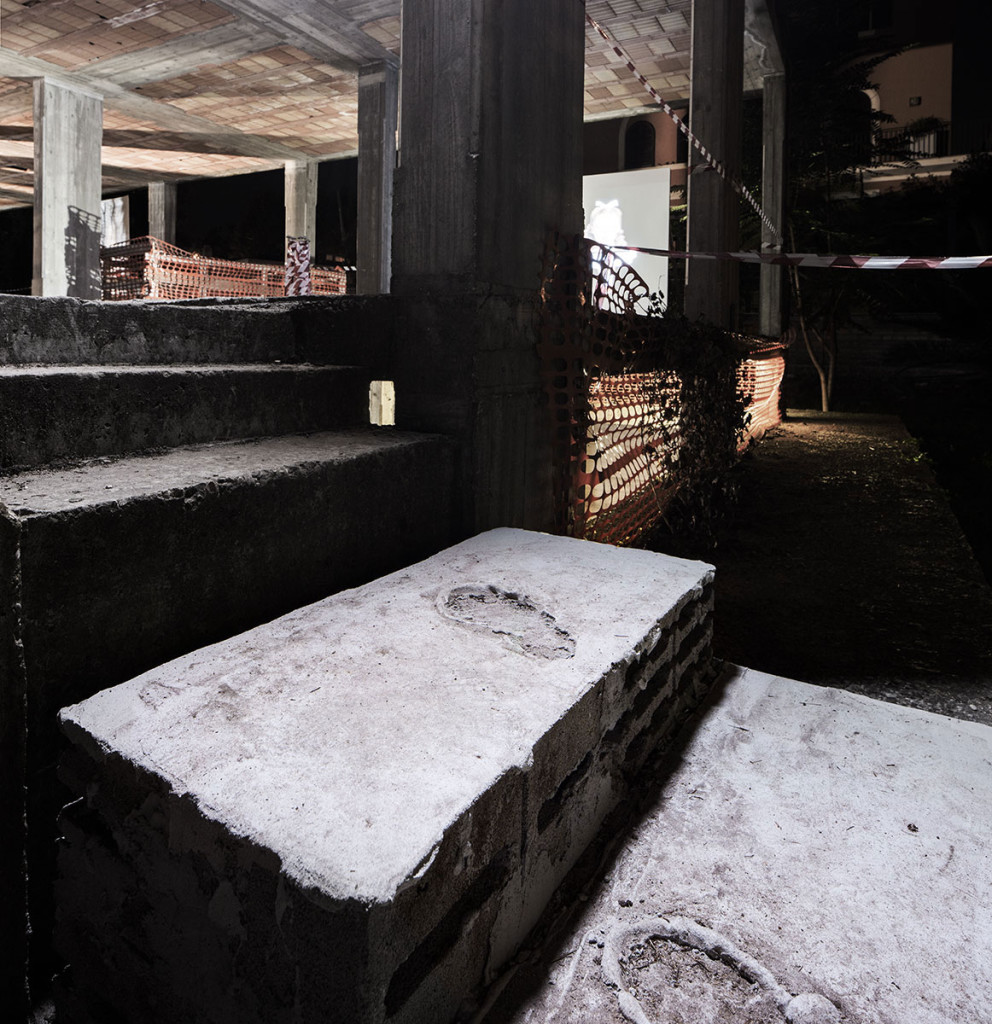
Federico Pietrella, project for the exhibition “There Is No Place Like Home”. Photo: altrospazio. Image courtesy There Is No Place Like Home.
How have you made clear the intention of focusing the entire discourse on the artist’s work?
The artists have committed themselves to the project by producing their own works with no external funds. Besides, the money issue, when an artist directly produces his/ her own work, this is way more immediate and more intimate. Curators usually invite artists according to a particular theme or because of a specific work suitable to a specific exhibition proposal. For There is no place like Home, artists have been invited to unconditionally relate to the space, and embrace the spirit of the project as well as its precariousness.
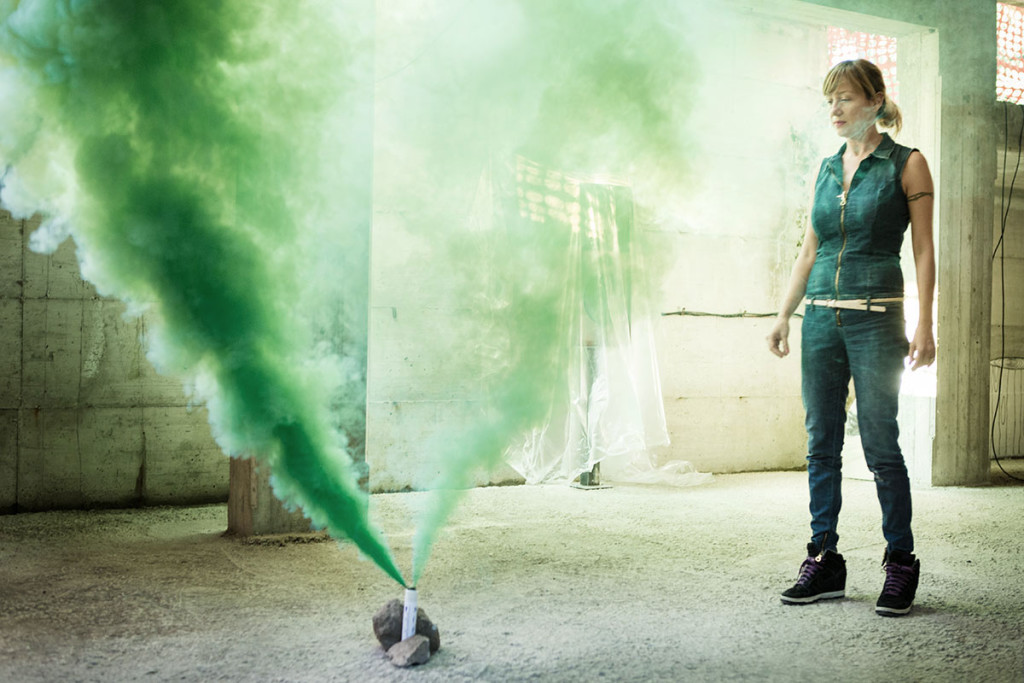
Performance by Goldschmied & Chiari, There is no place like home, 26-28 September 2014- h24, Rome. Photo: altrospazio. Image courtesy There Is No Place Like Home.
The specificity of the space you have chosen involves a certain peculiarity in the display. How did you work to prepare the setting? Was that a shared choice as well?
The display has been defined by a dialogue between the organizers and the artists. Yes, it has happened in loco in a shared manner.
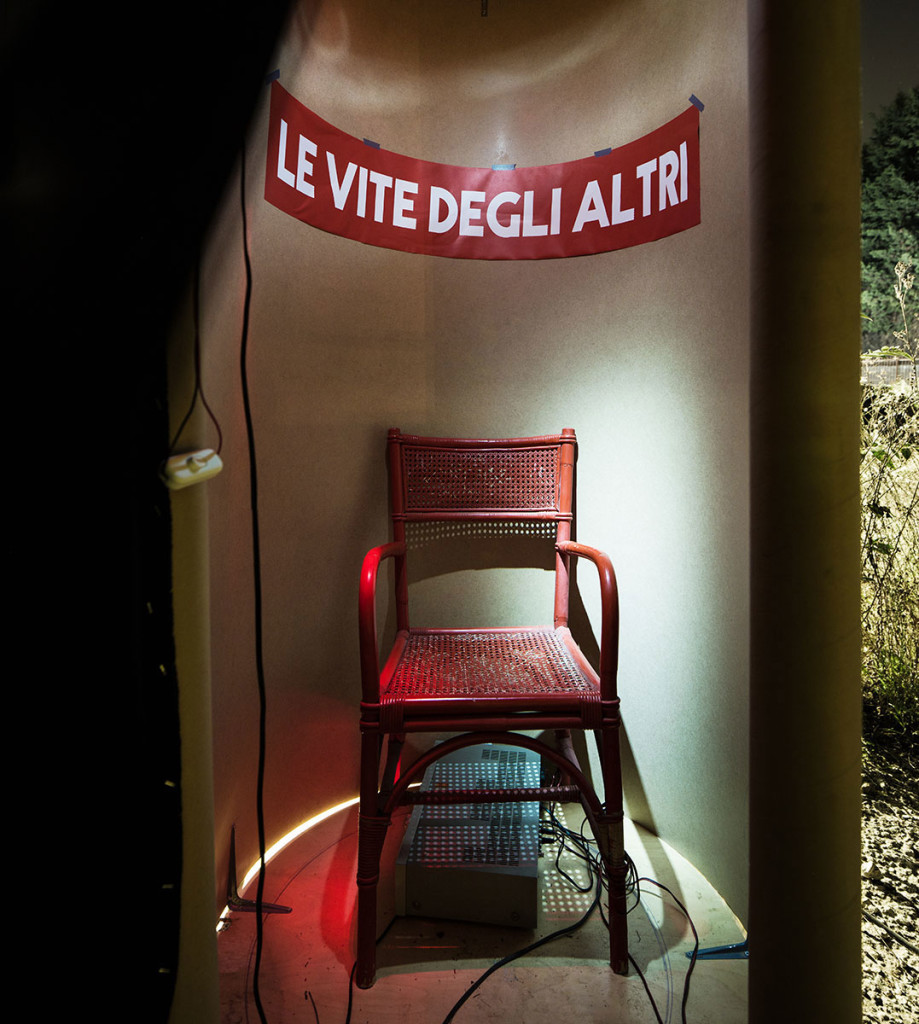
Corrado Sassi, ‘La vita degli altri’, 2014, wooden booth, radio system, performance and installation. Photo: altrospazio. Image courtesy There Is No Place Like Home.
Which have been the criteria for the selection of artists? And how would this choice be different from that of curators?
We have selected artists on the basis of our network; mutual respect and shared urgencies have been at stake in the selection. Our policy differs from the typical “curatorial call” as all of the artists have embraced the project by producing their own work with generosity.
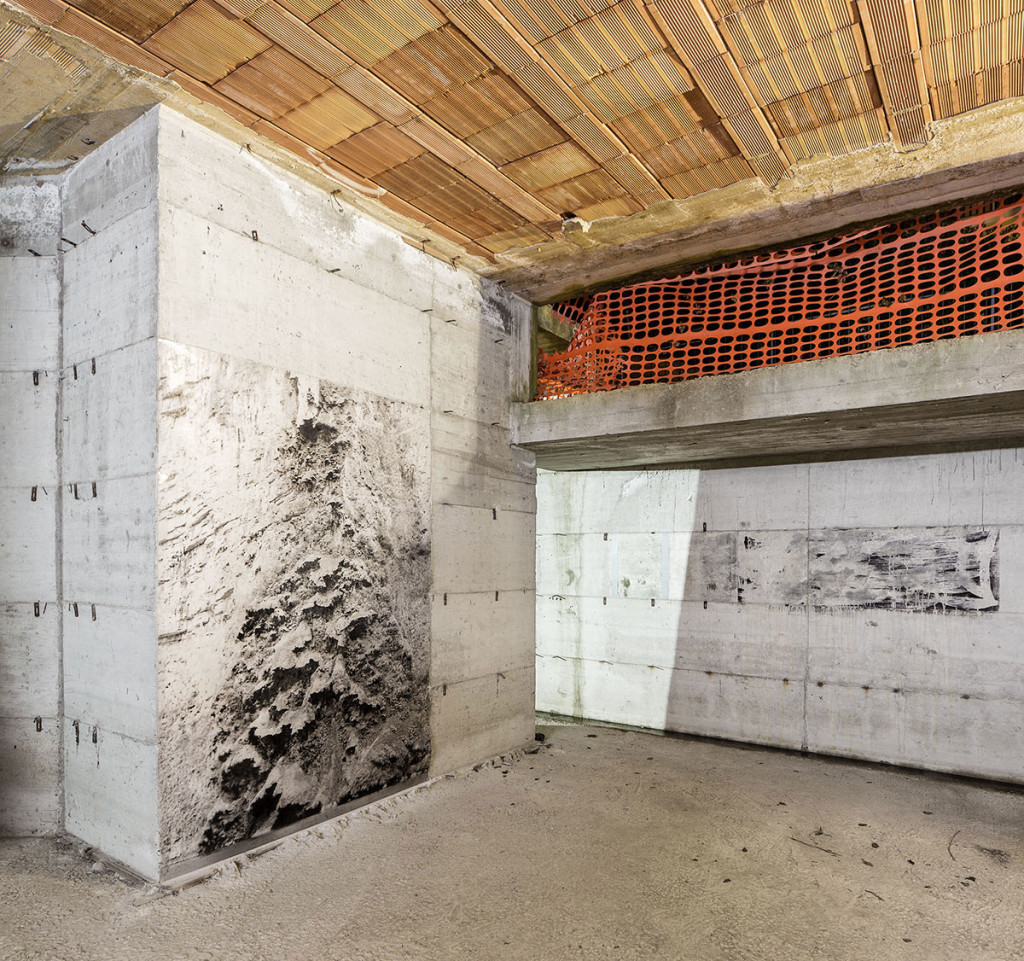
Alessandro Cicoria, ‘Senza titolo’, 2014, digital print on acetate, 200 x 150 cm. Photo: altrospazio. Image courtesy There Is No Place Like Home.
Considering the topics of ‘work in progress’ and ‘make collectively’, which are the urgencies that need a change in the situation you have outlined in There Is No Place Like Home?
A building always starts from a project; however dynamism is also crucial as often the project develops and changes according to the practical needs of the exhibition space. We believe the urgency in art is to build a coherent project by opening a dialogue with artists and the surrounding context.
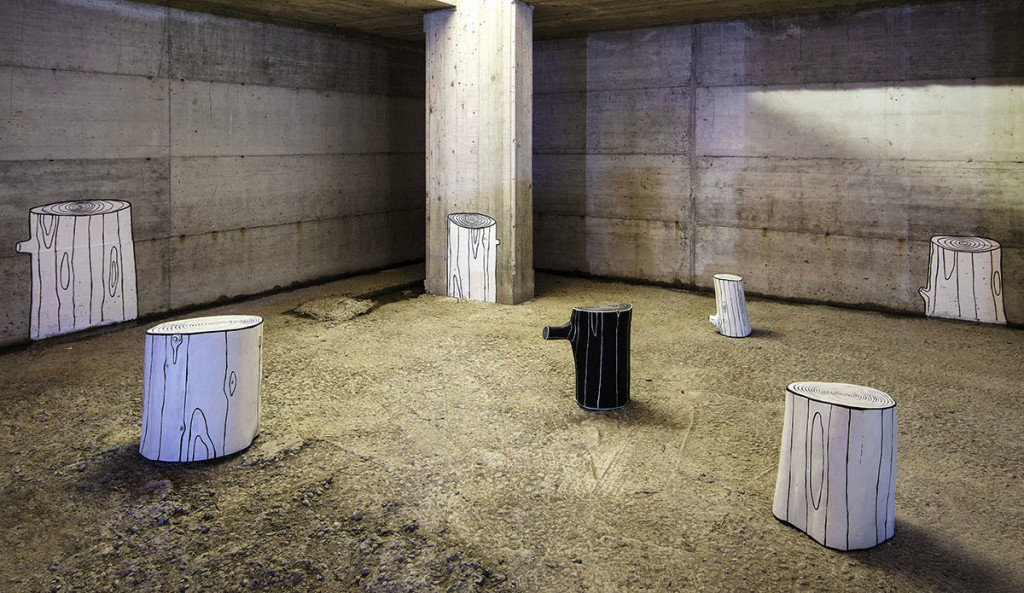
Marco Raparelli, ‘Mondo Cane’, project for There Is No Place Like Home. Photo: altrospazio. Image courtesy There Is No Place Like Home.
Do you feel that the group of artists you have involved may be a ‘movement’ representing an actual trend and/ or this geographical context? Thinking back to the key show Contemporanea in 1973, also exhibited in an unconventional public space, have you been somehow inspired by that kind of experience?
No, we haven’t. In general, we did not mean to represent trends or a movement. Rather, we are more interested in the action itself. Indeed, we happened to remember Contemporanea during our meetings , but a comparison is not possible for a different historical moment and diverse needs.
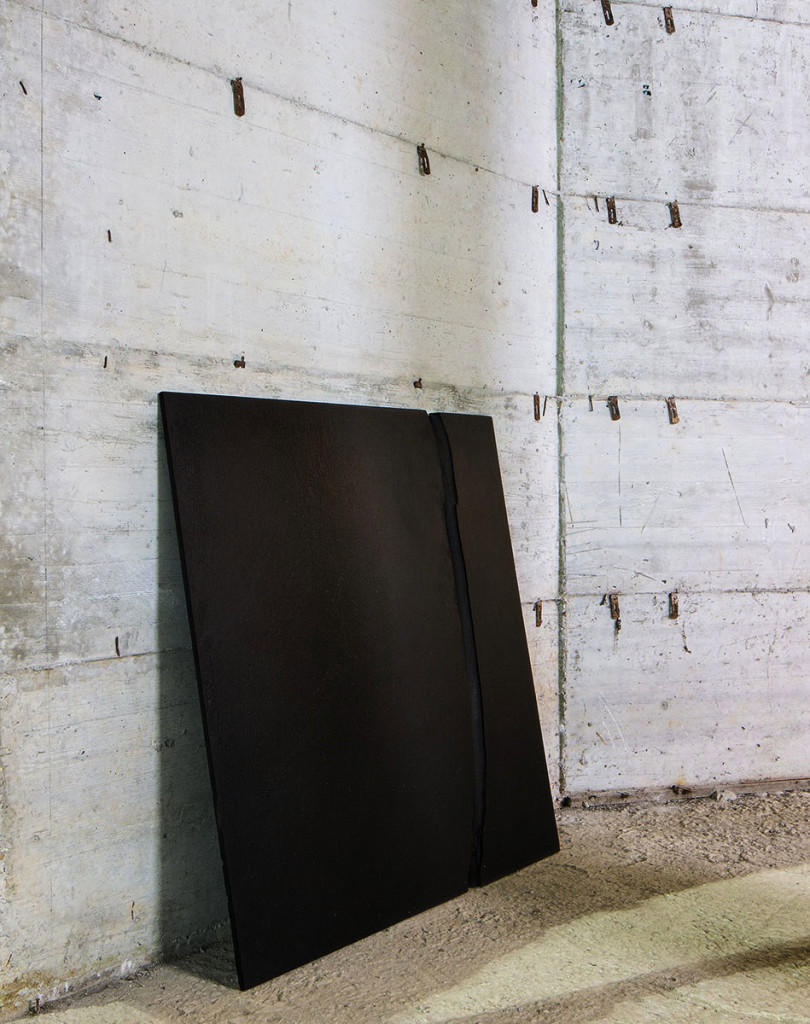
Giuseppe Pietroniro, ‘Segno’, 2014, blackboard and olive oil, 150 x 80 cm. Photo: altrospazio. Image courtesy There Is No Place Like Home.
As a project “in construction”, what’s next?
The catalogue published by NERO will be released soon and will be documenting the exhibition. To say it better, it is a book recounting through pictures the story of the place and of each work, from the “work in progress” phase to the final stage.
